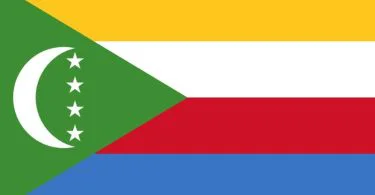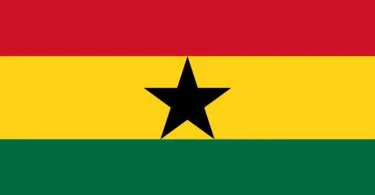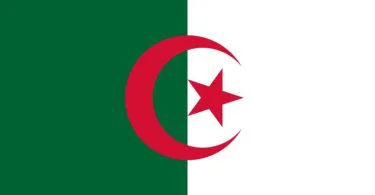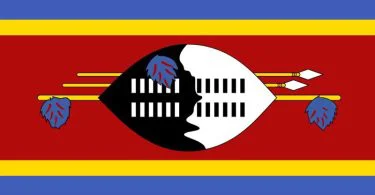Preamble CHAPTER 1. SOVEREIGNTY OF THE PEOPLE AND SUPREMACY OF THIS CONSTITUTION 1. Sovereignty of the people 2. Supremacy of this Constitution 3. Defence of this Constitution CHAPTER 2. THE REPUBLIC 4. Declaration of the Republic 5. Territory of Kenya 6. Devolution and access to services 7. National, official and other languages 8. State and religion 9. National symbols and national days 10. National values and principles of governance 11. Culture CHAPTER 3. CITIZENSHIP 12. Entitlements of citizens 13. Retention and acquisition of citizenship 14. Citizenship by birth 15. Citizenship by registration 16. Dual citizenship 17. Revocation of citizenship 18. Legislation on citizenship CHAPTER 4. THE BILL OF RIGHTS Part 1. General Provisions Relating to the Bill of Rights 19. Rights and fundamental freedoms 20. Application of Bill of Rights 21. Implementation of rights and fundamental freedoms 22. Enforcement of Bill of Rights 23. Authority of courts to uphold and enforce the Bill of Rights 24. Limitation of rights and fundamental freedoms 25. Fundamental Rights and freedoms that may not be limited Part 2. Rights and Fundamental Freedoms 26. Right to life 27. Equality and freedom from discrimination 28. Human dignity 29. Freedom and security of the person 30. Slavery, servitude and forced labour 31. Privacy 32. Freedom of conscience, religion, belief and opinion 33. Freedom of expression 34. Freedom of the media 35. Access to information 36. Freedom of association 37. Assembly, demonstration, picketing and petition 38. Political rights 39. Freedom of movement and residence 40. Protection of right to property 41. Labour relations 42. Environment 43. Economic and social rights 44. Language and culture 45. Family 46. Consumer rights 47. Fair administrative action 48. Access to justice 49. Rights of arrested persons 50. Fair hearing 51. Rights of persons detained, held in custody or imprisoned Part 3. Specific Application of Rights 52. Interpretation of this Part 53. Children 54. Persons with disabilities 55. Youth 56. Minorities and marginalised groups 57. Older members of society Part 4. State of Emergency 58. State of emergency Part 5. Kenya National Human Rights and Equality Commission 59. Kenya National Human Rights and Equality Commission CHAPTER 5. LAND AND ENVIRONMENT Part 1. Land 60. Principles of land policy 61. Classification of land 62. Public land 63. Community land 64. Private land 65. Landholding by non-citizens 66. Regulation of land use and property 67. National Land Commission 68. Legislation on land Part 2. Environment and Natural Resources 69. Obligations in respect of the environment 70. Enforcement of environmental rights 71. Agreements relating to natural resources 72. Legislation relating to the environment CHAPTER 6. LEADERSHIP AND INTEGRITY 73. Responsibilities of leadership 74. Oath of office of State officers 75. Conduct of State officers 76. Financial probity of State officers 77. Restriction on activities of State officers 78. Citizenship and leadership 79. Legislation to establish the ethics and anti-corruption commission 80. Legislation on leadership CHAPTER 7. REPRESENTATION OF THE PEOPLE Part 1. Electoral System and Process 81. General principles for the electoral system 82. Legislation on elections 83. Registration as a voter 84. Candidates for election and political parties to comply with code of conduct 85. Eligibility to stand as an independent candidate 86. Voting 87. Electoral disputes Part 2. Independent Electoral and Boundaries Commission and Delimitation of Electoral Units 88. Independent Electoral and Boundaries Commission 89. Delimitation of electoral units 90. Allocation of party list seats Part 3. Political Parties 91. Basic requirements for political parties 92. Legislation on political parties CHAPTER 8. THE LEGISLATURE Part 1. Establishment and Role of Parliament 93. Establishment of Parliament 94. Role of Parliament 95. Role of the National Assembly 96. Role of the Senate Part 2. Composition and Membership of Parliament 97. Membership of the National Assembly 98. Membership of the Senate 99. Qualifications and disqualifications for election as member of Parliament 100. Promotion of representation of marginalised groups 101. Election of members of Parliament 102. Term of Parliament 103. Vacation of office of member of Parliament 104. Right of recall 105. Determination of questions of membership Part 3. Offices of Parliament 106. Speakers and Deputy Speakers of Parliament 107. Presiding in Parliament 108. Party leaders Part 4. Procedures for Enacting Legislation 109. Exercise of legislative powers 110. Bills concerning county government 111. Special Bills concerning county governments 112. Ordinary Bills concerning county governments 113. Mediation committees 114. Money Bills 115. Presidential assent and referral 116. Coming into force of laws Part 5. Parliament’s General Procedures and Rules 117. Powers, privileges and immunities 118. Public access and participation 119. Right to petition Parliament 120. Official languages of Parliament 121. Quorum 122. Voting in Parliament 123. Decisions of Senate 124. Committees and Standing Orders 125. Power to call for evidence Part 6. Miscellaneous 126. Location of sittings of Parliament 127. Parliamentary Service Commission 128. Clerks and staff of Parliament CHAPTER 9. THE EXECUTIVE Part 1. Principles and Structure of the National Executive 129. Principles of executive authority 130. The National Executive Part 2. The President and Deputy President 131. Authority of the President 132. Functions of the President 133. Power of mercy 134. Exercise of presidential powers during temporary incumbency 135. Decisions of the President 136. Election of the President 137. Qualifications and disqualifications for election as President 138. Procedure at presidential election 139. Death before assuming office 140. Questions as to validity of presidential election 141. Assumption of office of President 142. Term of office of President 143. Protection from legal proceedings 144. Removal of President on grounds of incapacity 145. Removal of President by impeachment 146. Vacancy in the office of President 147. Functions of the Deputy President 148. Election and swearing in of Deputy President 149. Vacancy in the office of Deputy President 150. Removal of Deputy President 151. Remuneration and benefits of President and Deputy President Part 3. The Cabinet 152. Cabinet 153. Decisions, responsibility and accountability of the Cabinet 154. Secretary to the Cabinet 155. Principal Secretaries Part 4. Other Offices 156. Attorney-General 157. Director of Public Prosecutions 158. Removal and resignation of Director of Public Prosecutions CHAPTER 10. JUDICIARY Part 1. Judicial Authority and Legal System 159. Judicial authority 160. Independence of the Judiciary 161. Judicial offices and officers 162. System of courts Part 2. Superior Courts 163. Supreme Court 164. Court of Appeal 165. High Court 166. Appointment of Chief Justice, Deputy Chief Justice and other judges 167. Tenure of office of the Chief Justice and other judges 168. Removal from office Part 3. Subordinate Courts 169. Subordinate courts 170. Kadhis’ Courts Part 4. Judicial Service Commission 171. Establishment of the Judicial Service Commission 172. Functions of the Judicial Service Commission 173. Judiciary Fund CHAPTER 11. DEVOLVED GOVERNMENT Part 1. Objects and Principles of Devolved Government 174. Objects of devolution 175. Principles of devolved government Part 2. County Governments 176. County governments 177. Membership of county assembly 178. Speaker of a county assembly 179. County executive committees 180. Election of county governor and deputy county governor 181. Removal of a county governor 182. Vacancy in the office of county governor 183. Functions of county executive committees 184. Urban areas and cities 185. Legislative authority of county assemblies Part 3. Functions and Powers of County Governments 186. Respective functions and powers of national and county governments 187. Transfer of functions and powers between levels of government Part 4. The Boundaries of Counties 188. Boundaries of counties Part 5. Relationships Between Governments 189. Cooperation between national and county governments 190. Support for county governments 191. Conflict of laws Part 6. Suspension of County Governments 192. Suspension of a county government Part 7. General 193. Qualifications for election as member of county assembly 194. Vacation of office of member of county assembly 195. County assembly power to summon witnesses 196. Public participation and county assembly powers, privileges and immunities 197. County assembly gender balance and diversity 198. County government during transition 199. Publication of county legislation 200. Legislation on Chapter CHAPTER 12. PUBLIC FINANCE Part 1. Principles and Framework of Public Finance 201. Principles of public finance 202. Equitable sharing of national revenue 203. Equitable share and other financial laws 204. Equalisation Fund 205. Consultation on financial legislation affecting counties Part 2. Other Public Funds 206. Consolidated Fund and other public funds 207. Revenue Funds for county governments 208. Contingencies Fund Part 3. Revenue-Raising Powers and the Public Debt 209. Power to impose taxes and charges 210. Imposition of tax 211. Borrowing by national government 212. Borrowing by counties 213. Loan guarantees by national government 214. Public debt Part 4. Revenue Allocation 215. Commission on Revenue Allocation 216. Functions of the Commission on Revenue Allocation 217. Division of revenue 218. Annual Division and Allocation of Revenue Bills 219. Transfer of equitable share Part 5. Budgets and Spending 220. Form, content and timing of budgets 221. Budget estimates and annual Appropriation Bill 222. Expenditure before annual budget is passed 223. Supplementary appropriation 224. County appropriation Bills Part 6. Control of Public Money 225. Financial control 226. Accounts and audit of public entities 227. Procurement of public goods and services Part 7. Financial Officers and Institutions 228. Controller of Budget 229. Auditor-General 230. Salaries and Remuneration Commission 231. Central Bank of Kenya CHAPTER 13. THE PUBLIC SERVICE Part 1. Values and Principles of Public Service 232. Values and principles of public service Part 2. The Public Service Commission 233. The Public Service Commission 234. Functions and powers of the Public Service Commission 235. Staffing of county governments 236. Protection of public officers Part 3. Teachers Service Commission 237. Teachers Service Commission CHAPTER 14. NATIONAL SECURITY Part 1. National Security Organs 238. Principles of national security 239. National security organs 240. Establishment of the National Security Council Part 2. The Kenya Defence Forces 241. Establishment of Defence Forces and Defence Council Part 3. The National Intelligence Service 242. Establishment of National Intelligence Service Part 4. The National Police Service 243. Establishment of the National Police Service 244. Objects and functions of the National Police Service 245. Command of the National Police Service 246. National Police Service Commission 247. Other police services CHAPTER 15. COMMISSIONS AND INDEPENDENT OFFICES 248. Application of Chapter 249. Objects, authority and funding of commissions and independent offices 250. Composition, appointment and terms of office 251. Removal from office 252. General functions and powers 253. Incorporation of commissions and independent offices 254. Reporting by commissions and independent offices CHAPTER 16. AMENDMENT OF THIS CONSTITUTION 255. Amendment of this Constitution 256. Amendment by parliamentary initiative 257. Amendment by popular initiative CHAPTER 17. GENERAL PROVISIONS 258. Enforcement of this Constitution 259. Construing this Constitution 260. Interpretation CHAPTER 18. TRANSITIONAL AND CONSEQUENTIAL PROVISIONS 261. Consequential legislation 262. Transitional and consequential provisions 263. Effective Date 264. Repeal of previous constitution SCHEDULES FIRST SCHEDULE. COUNTIES (Article 6 (1)) SECOND SCHEDULE. NATIONAL SYMBOLS (Article 9 (2)) a. The National Flag b. The National Anthem c. The Coat of Arms d. The Public Seal THIRD SCHEDULE. NATIONAL OATHS AND AFFIRMATIONS (Articles 74, 141 (3), 148 (5) and 152 (4)) 1. OATH OR SOLEMN AFFIRMATION OF ALLEGIANCE OF THE PRESIDENT/ACTING PRESIDENT AND THE DEPUTY PRESIDENT 2. OATH OR SOLEMN AFFIRMATION OF DUE EXECUTION OF OFFICE FOR THE PRESIDENT/ACTING PRESIDENT 3. OATH OR SOLEMN AFFIRMATION OF DUE EXECUTION OF OFFICE FOR THE DEPUTY PRESIDENT 4. OATH OR SOLEMN AFFIRMATION OF DUE EXECUTION OF OFFICE FOR A CABINET SECRETARY 5. OATH OR SOLEMN AFFIRMATION OF DUE EXECUTION OF OFFICE FOR SECRETARY TO THE CABINET/ A PRINCIPAL SECRETARY 6. OATHS FOR THE CHIEF JUSTICE /PRESIDENT OF THE SUPREME COURT, JUDGES OF THE SUPREME COURT, JUDGES OF THE COURT OF APPEAL AND JUDGES OF THE HIGH COURT 7. OATH /AFFIRMATION OF MEMBER OF PARLIAMENT (SENATE/ NATIONAL ASSEMBLY 8. OATH FOR SPEAKER/DEPUTY SPEAKER OF THE SENATE/NATIONAL ASSEMBLY FOURTH SCHEDULE. DISTRIBUTION OF FUNCTIONS BETWEEN THE NATIONAL GOVERNMENT AND THE COUNTY GOVERNMENTS (Article 185 (2), 186 (1) and 187 (2)) Part 1. National Government Part 2. County Governments FIFTH SCHEDULE. LEGISLATION TO BE ENACTED BY PARLIAMENT (Article 261 (1)) SIXTH SCHEDULE. TRANSITIONAL AND CONSEQUENTIAL PROVISIONS (Article 262) Part 1. General 1. Interpretation 2. Suspension of provisions of this Constitution 3. Extension of application of provisions of the former constitution 4. Parliamentary Select Committee 5. Commission for the Implementation of the Constitution Part 2. Existing Obligations, Laws and Rights 6. Rights, duties and obligations of the State 7. Existing laws 8. Existing land holdings and agreements relating to natural resources Part 3. National Government 9. Elections and by-elections 10. National Assembly 11. The Senate 12. The Executive 13. Oath of allegiance to this Constitution Part 4. Devolved Government 14. Operation of provisions relating to devolved government 15. Provision for devolution of functions to be made by Act of Parliament 16. Division of revenue 17. Provincial Administration 18. Local Authorities Part 5. Administration of Justice 19. Rules for the enforcement of the Bill of Rights 20. The Judicial Service Commission 21. Establishment of the Supreme Court 22. Judicial proceedings and pending matters 23. Judges 24. Chief Justice Part 6. Commissions and Offices 25. Constitutional Commissions 26. The Kenya National Human Rights and Equality Commission 27. The Interim Independent Boundaries Commission 28. The Interim Independent Electoral Commission and Independent Electoral and Boundaries Commission 29. New appointments Part 6. Miscellaneous Matters 30. Citizenship by birth 31. Existing offices 32. Pensions, gratuities and other benefits 33. Succession of institutions, offices, assets and liabilities 34. Currency
We, the people of Kenya –
ACKNOWLEDGING the supremacy of the Almighty God of all creation:
HONOURING those who heroically struggled to bring freedom and justice to our land:
PROUD of our ethnic, cultural and religious diversity, and determined to live in peace and unity as one indivisible sovereign nation:
RESPECTFUL of the environment, which is our heritage, and determined to sustain it for the benefit of future generations:
COMMITTED to nurturing and protecting the well-being of the individual, the family, communities and the nation:
RECOGNISING the aspirations of all Kenyans for a government based on the essential values of human rights, equality, freedom, democracy, social justice and the rule of law:
EXERCISING our sovereign and inalienable right to determine the form of governance of our country and having participated fully in the making of this Constitution:
ADOPT, ENACT and give this Constitution to ourselves and to our future generations.
GOD BLESS KENYA
All sovereign power belongs to the people of Kenya and shall be exercised only in accordance with this Constitution.
The people may exercise their sovereign power either directly or through their democratically elected representatives.
Sovereign power under this Constitution is delegated to the following State organs, which shall perform their functions in accordance with this Constitution-
Parliament and the legislative assemblies in the county governments;
the national executive and the executive structures in the county governments; and
the Judiciary and independent tribunals.
The sovereign power of the people is exercised at-
the national level; and
the county level.
This Constitution is the supreme law of the Republic and binds all persons and all State organs at both levels of government.
No person may claim or exercise State authority except as authorised under this Constitution.
The validity or legality of this Constitution is not subject to challenge by or before any court or other State organ.
Any law, including customary law, that is inconsistent with this Constitution is void to the extent of the inconsistency, and any act or omission in contravention of this Constitution is invalid.
The general rules of international law shall form part of the law of Kenya.
Any treaty or convention ratified by Kenya shall form part of the law of Kenya under this Constitution.
Every person has an obligation to respect, uphold and defend this Constitution.
Any attempt to establish a government otherwise than in compliance with this Constitution is unlawful.
Get more fascinating contents like this on Facebook .






